Research
General Remarks
Our department is actively engaged in basic and clinical research. We believe it is essential for physicians to acquire the logical thinking necessary for daily clinical practice through research. Research education is the responsibility of the supervising physician. All of today’s medicine is based on the basic research of our predecessors. We hope that you will understand the fundamentals of medicine through your own research, and contribute to the advancement of medicine yourself.
Medical students
We are always open to students interested in research. You will learn experimental theory by conducting experiments in the laboratory between lectures and club activities.
Graduate students
Classroom staff are given 2-4 years to do research. In fact, it is often difficult to know what you like or dislike about research, or what you are not good at, until you try your hand at it yourself. Some graduate students, who may have been unsuited to research by their own judgment, may find an aptitude for research and develop their skills. Research is truly fascinating, and there is a special pleasure in being the first to find out about the world’s first findings. We all get a thrill out of imagining the day when we can apply it to real-world diagnoses and treatments. In addition, the learning of theory building that is fostered through experimentation is also useful in clinical practice. There is great significance in approaching clinical practice with a research perspective.
Domestic students
We also accept foreign students from institutions in Japan. The period and content of the research are determined in consultation with the institution where the student is working and his/her background and wishes.
Overseas Students
We welcome a wide range of international students with the hope of contributing to the international community and promoting friendly rivalry between the faculty and students. In most cases, students graduate from the graduate school after publishing one or two basic research papers in four years. So far, no international student has dropped out of the program.
Graduate students in other departments
We accept neurosurgeons as well as graduate students from other departments if they wish. Research projects will be considered according to each person’s wishes. Currently, one pathologist is involved in brain tumor research as a graduate student.
Research Contents
There are two major groups: brain tumor research and cerebrovascular disease research.
Brain tumor research includes molecular and cell biological experiments on the molecular mechanisms involved in malignant traits of malignant brain tumors. Statistical analysis of images using MRI and white matter dissection of corpse brain are also carried out.
Research on cerebrovascular disorders includes basic research using animal models of subarachnoid hemorrhage and cerebral infarction, and fluid dynamics research using clinical data.
Our department has a lot of experts in the fields of brain tumors and cerebrovascular diseases, and the researches are conducted under the supervision of their supervisors. In addition, we have many collaborators from other fields to support our research, and our projects are of high quality. There are still many unknowns about the brain, and you will realize that the 21st century is the age of the brain.
As much as possible, we try to respect topics that address questions that you have asked in your clinical practice, and we try to make sure that your degree research is in your own area of interest. This is because we believe that such research is more lasting and less likely to be frustrated. In conducting research, there are many steps to learn, including research idea and conception, experimentation, results analysis, interpretation of results, writing a paper in English, submission, and replying to peer reviewers. Since no one can do research on their own from the beginning, we want you to make sure that you learn these steps from the process of carrying out the topic you have initially set up after reviewing it with your supervisor. Once this is complete, you will be asked to work on your own newly conceived topic or a more developed topic related to your initial research.
It can be quite painful to put together a solid body of research. You may be at a loss, especially when you are new to the subject, as you will be unable to produce data from experiment after experiment. Don’t give up here. There is no night that you cannot see the light of day. I hope you will have a successful experience through your research. This experience will be useful in later clinical practice. It goes without saying that you need to be very enthusiastic, but your supervisor will not abandon the enthusiasm of the young doctor. I encourage you to finish your degree with a strong determination.
I hope to fulfill my desire to study in Japan and abroad after I complete my degree and become a specialist in neurosurgery. I will have no trouble deciding where to study abroad. Many of the instructors who have studied abroad, including myself, have many friends abroad. Many of my colleagues who have studied abroad are now conducting independent research in various countries. It is possible to conduct research there as a postdoctoral researcher. You may also want to look for a place to study abroad on your own. The entire classroom will support you.
Recent Collaborative Research
# Discovering the microstructure of the brain’s surface layer, the foundation of brain function!
https://www.kanazawa-u.ac.jp/rd/79256
# Successful control of brain and spinal cord tumors by inhibiting the expression of specific molecules in the nuclear pore complex, a molecular nanogate!
https://www.kanazawa-u.ac.jp/rd/77302
# Development of a gripper that can detect hidden blood vessels in tumor removal surgery
https://www.kanazawa-u.ac.jp/rd/76256
# Elucidation of the mechanisms of molecularly targeted drug resistance in central nervous system transitions
-Overcome resistance with other molecularly targeted drugs
https://www.kanazawa-u.ac.jp/rd/75296
# Elucidation of the molecular mechanism of action of the love hormone oxytocin!
https://www.kanazawa-u.ac.jp/rd/65488
Recent Dissertation
Taishi Tsutsui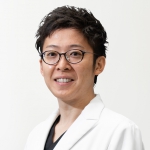
- Tsutsui T, Kawahara H, Kimura R, Dong Y, Jiapaer S, Sabit H, Zhang J, Yoshida T, Nakada M, Hanayama R.
Zhang Jiakang
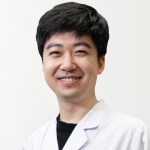
- Zhang J, Furuta T, Sabit H, Tamai S, Jiapaer S, Dong Y, Kinoshita M, Uchida Y, Ohtsuki S, Terasaki T, Zhao S, Nakada M.
Gelsolin inhibits malignant phenotype of glioblastoma and is regulated by miR-654-5p and miR-450b-5p.
Cancer Science Apr 23, 2020
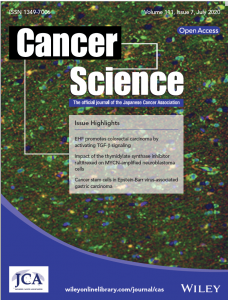
Shabierjiang Jiapaer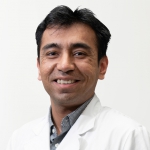
- Jiapaer S, Furuta T, Dong Y, Kitabayashi T, Sabit H, Zhang J, Zhang G, Tanaka S, Kobayashi M, Hirao A, Nakada M.
Identification of 2-fluoropalmitic acid as a potential therapeutic agent against glioblastoma.
Curr Pharm Des [Epub ahead of print] Apr 28, 2020
Liu Xiaoliang
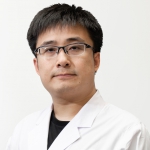
- Liu X, Kinoshita M, Shinohara H, Hori O, Ozaki N, Nakada M.
Does the superior fronto-occipital fascicle exist in the human brain? Fiber dissection and brain functional mapping in 90 patients with gliomas.
Neuroimage Clin. 25:102192, 2020
Masahiro Oishi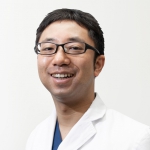
- Oishi M, Munesue S, Harashima A, Nakada M, Yamamoto Y, Hayashi Y.
Aquaporin 1 elicits cell motility and coordinates vascular bed formation by downregulating thrombospondin type-1 domain-containing 7A in glioblastoma.
Cancer Med. Apr 6. 2020
Yasuhiro Aida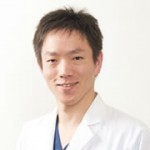
- Aida Y, Kamide T, Ishii H, Kitao Y, Uchiyama N, Nakada M, Hori O.
Soluble receptor for advanced glycation end products as a biomarker of symptomatic vasospasm in subarachnoid hemorrhage
J Neurosurg. [Online ahead of print] Nov 1. 2019
Yu Shimizu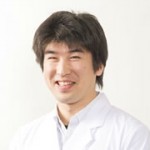
- Shimizu Y, Harashima1 A, Munesue S, Oishi M, Hattori T, Hori O, Kitao Y, Yamamoto H, Leerach N, Nakada M, Yamamoto Y, Hayashi Y.
Neuroprotective effects of endogenous secretory receptor for advanced glycation end-products in brain ischemia.
Aging and Disease 11: 547-558, 2020
Tomohiro Kitabayashi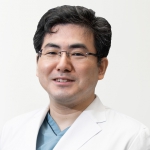
- Kitabayashi T, Dong Y, Furuta T, Sabit H, Jiapaer S, Zhang J, Zhang G, Hayashi Y, Kobayashi M, Domoto T, Minamoto T, Hirao A, Nakada M.
Identification of GSK3β inhibitor kenpaullone as a temozolomide enhancer against glioblastoma.
Sci Rep 9: 10049, 2019
Yosuke Kawahara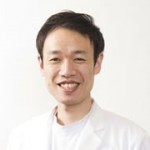
- Kawahara Y, Furuta T, Sabit H, Tamai S, Yu D, Jiapaer S, Zhang J, Zhang G, Oishi M, Miyashita K, Hayashi Y, Nakada M.
Ligand-dependent EphB4 activation serves as an anchoring signal in glioma cells.
Cancer Letters 449: 56-65, 2019
Iku Nambu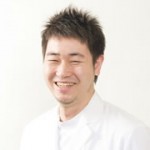
- Nambu I, Misaki K, Uchiyama N, Mohri M, Suzuki T, Takao H, Murayama Y, Futami K, Kawamura T, Inoguchi Y, Matsuzawa T, Nakada M.
High pressure in virtual postcoiling model is a predictor of internal carotid artery aneurysm recurrence after coiling
Neurosurgery 84: 607-615, 2019
Yu Dong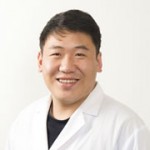
- Dong Y, Furuta T, Sabit H, Kitabayashi T, Jiapaer S, Kobayashi M, Ino Y, Todo T, Teng L, Hirao A, Zhao SG, Nakada M.
Identification of antipsychotic drug fluspirilene as a potential anti-glioma stem cell drug. Oncotarget 8: 111728-111741, 2017
Takuya Furuta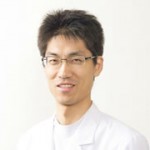
- Furuta T, Sabit H, Yu D, Miyashita K, Kinoshita M, Uchiyama N, Hayashi Y, Hayashi Y, Minamoto T, Nakada M.
Biological basis and clinical trial of glycogen synthase kinase-3β-targeted therapy by drug repositioning for glioblastoma.
Oncotarget 8: 22811-22824, 2017 金沢大学学長賞
Akifumi Yoshikawa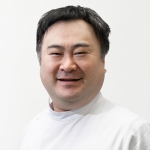
- Yoshikawa A, Kamide T, Hashida K, Ta HM, Inahata Y, Takarada-Iemata M, Hattori T, Mori K, Takahashi R, Matsuyama T, Hayashi Y, Kitao Y, Hori O.
Deletion of Atf6α impairs astroglial activation and enhances neuronal death following brain ischemia in mice.
J Neurochem. 132: 342-53, 2015
Shingo Tanaka
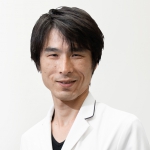
- Tanaka S, Nakada M, Yamada D, Nakano I, Todo T, Ino Y, Hoshii T, Tadokoro Y, Ohta K, Ali MA, Hayashi Y, Hamada JI, Hirao A.
Strong therapeutic potential of γ-secretase inhibitor MRK003 for CD44-high and CD133-low glioblastoma initiating cells.
J Neurooncol 121: 239-250, 2015

